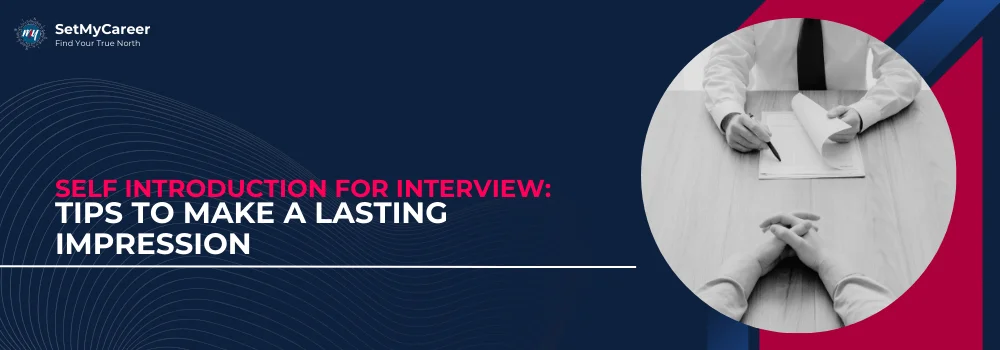Published by Jyothi Patil on 11 October 2024
Content Strategist | Editorial Team Member
Jyothi Patil is a skilled writer with a strong background in English literature, which she applies to crafting engaging content across various platforms. From writing blogs for her website and guest posts to creating pieces on Medium and Substack, Jyothi excels in making complex ideas easy to understand.
Master the art of self introduction for interview to showcase your skills, personality, and confidence effectively.

Picture this: You step into the interview room, palms slightly sweaty, and heart racing. The interviewer greets you warmly, and the first thing they say is, “Tell me about yourself.” This moment isn’t just about stating your name or reading off your resume—it’s your opportunity to stand out and set the stage for the rest of the interview.
A strong self-introduction for interview is more than just an icebreaker; it’s your opportunity to make a positive and lasting impression. By blending authenticity with strategy, you can craft how to introduce yourself in an interview that highlights your achievements, aligns with the role, and leaves the interviewer eager to learn more. Let’s dive into practical ways to nail this critical first step.
Interviews aren’t just about skills; they’re about connection. A well-structured self-introduction shows not only who you are but also how you fit the company’s culture and the role’s demands. This means your introduction holds immense power to set the right tone.
Start with a smile and a confident tone. Greet the interviewer with a “Good morning” or “Good afternoon”, followed by your full name. Keep it simple and professional.
For example:
“Good morning, my name is Priya Sharma. Thank you for having me here today.”
This shows confidence and creates a welcoming atmosphere for further conversation.
Briefly describe your background in a way that aligns with the role. Focus on your academic achievements, key professional milestones, and relevant experiences. Use measurable results if possible.
For instance:
“I have a bachelor’s degree in Computer Science and over three years of experience as a software developer, where I contributed to streamlining backend processes, reducing downtime by 25%, and enhancing system efficiency.”
This balances self-promotion with relevance to the role.
What makes you stand out? It could be a unique skill, a personal trait, or a significant accomplishment. Frame it to show how it benefits the organization.
Example:
“In my last position, I introduced an innovative coding framework that reduced project delivery timelines by 15%. My problem-solving skills and attention to detail have always been key assets in my career.”
Show you’ve done your homework by linking your introduction to the company’s goals. Express enthusiasm about the opportunity and how your skills align with the role.
Example:
“I’m particularly excited about this position at XYZ Corp because it combines my passion for innovative technology with the opportunity to develop cutting-edge solutions, something your team is renowned for.”
Your introduction should last around 1–2 minutes. Avoid overloading it with unnecessary details. Practice beforehand to ensure it flows naturally and fits within the time frame.
Conclude your introduction by inviting the interviewer to proceed, signaling that you’re open and ready for the next part of the interview.
Example:
“That’s a brief overview of my background. I’d love to discuss how my skills align with the role and learn more about what you’re looking for in a candidate.”

Don’t let ATS filter you out—boost your chances with these tips
Get Noticed FasterPractice, But Don’t Memorize: Familiarity with your introduction is key, but it shouldn’t sound robotic or rehearsed. This also helps when addressing tricky topics like weaknesses in an interview, allowing you to stay composed and articulate.
Adapt to Virtual Interviews: Ensure your body language, tone, and expressions come across confidently through the screen. Knowing how to be confident in an interview is especially important in virtual settings, where physical cues are limited.
Stay Authentic: Be genuine about your experiences and aspirations. Authenticity is more compelling than exaggeration.
Master Your Body Language: Smile, maintain good posture, and make eye contact to exude confidence.
A powerful self-introduction is your ticket to leaving a lasting impression in any interview. By blending confidence, authenticity, and preparation, you can showcase your value and align yourself with the role seamlessly.
Need help refining your self-introduction or preparing for interviews? SetMyCareer is here to guide you with career counselling after graduation at every step of the way. Connect with our experts to explore your potential and achieve your career goals.
No. 14/595, 1st Floor, Nanjappa Reddy Layout, Koramangala 8th Block, Bangalore 560095